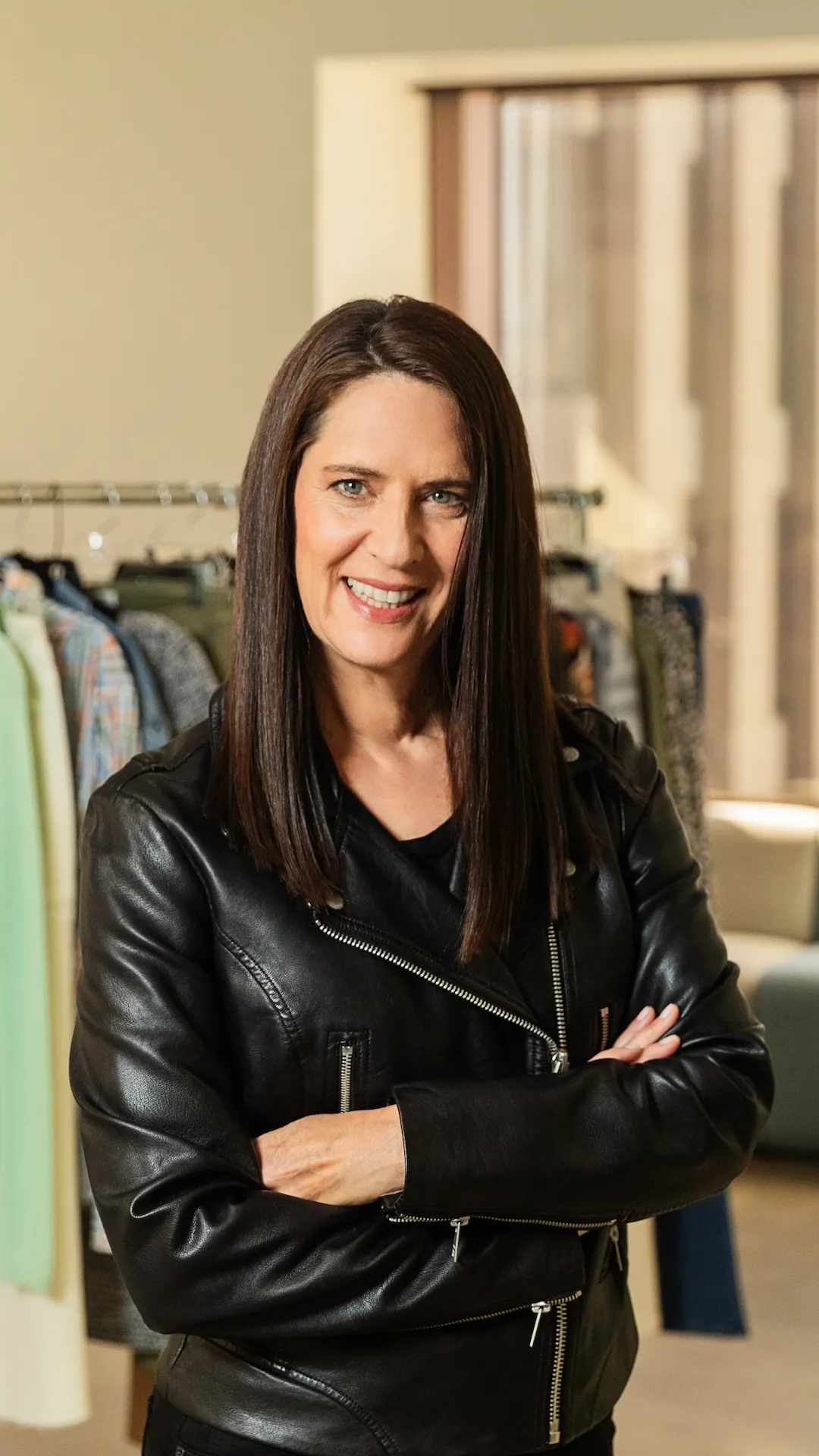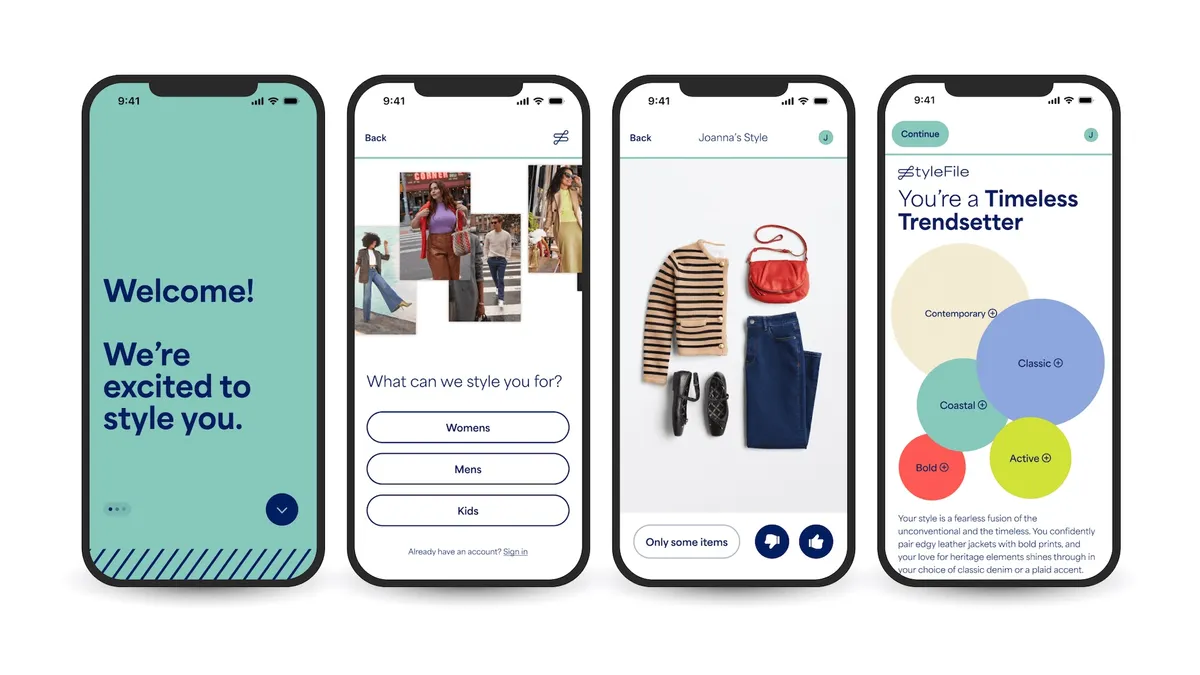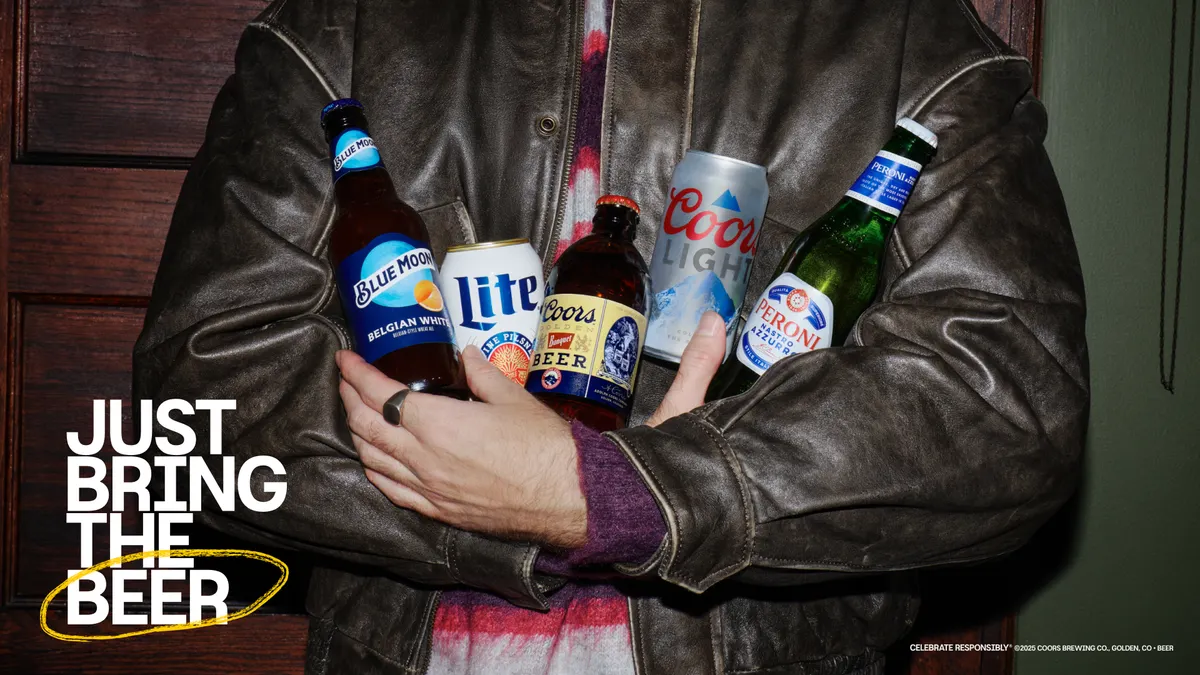For many consumers, shopping for clothes follows a familiar pattern: leaving the house with hope and optimism before facing packed parking lots, messy dressing rooms, crying children and a surfeit a product choice. Often, they return home demotivated and empty-handed.
“We all know that shopping is hard, and traditional shopping in its current form is broken,” said Debbie Woloshin, chief marketing officer at styling service Stitch Fix. “We know that 90% of consumers feel stress when they’re looking for something, and we know that it applies to their fit and style needs.”
Stitch Fix has been working to address those pain points since its founding in 2011, turning style preferences into individually selected apparel boxes. But the company has faced widening declines in recent years, with fiscal year 2024 net revenue down 16%. To turn its fortunes around, Stitch Fix last year began a transformation strategy that it hopes will help it return to overall revenue growth during FY 2026.

As part of the pivot, Woloshin has helped oversee a rebrand, reimagining of the Stitch Fix client experience and the launch of a new brand platform. That platform, called Retail Therapy, brings its title to life as actual support groups and counselor sessions in both scripted and unscripted content appearing across social media, TV, over-the-top video and YouTube. The company plans to continue building on the platform, which debuted in August, after seeing early success, CEO Matt Baer said on a recent earnings call.
Woloshin was appointed CMO at Stitch Fix in May 2022 after serving in the same role at Marc Jacobs. In her first interview since joining the company, Woloshin spoke to Marketing Dive about the rebrand, artificial intelligence (AI) and staying agile amid macro challenges.
The following interview has been edited for clarity and brevity.
MARKETING DIVE: Tell me about Retail Therapy and what informed the brand platform.
DEBBIE WOLOSHIN: Retail Therapy as a platform for the brand digs deep in terms of personalization, as well as solving for the pain points that we know our clients experience, and bringing that joy and confidence to our clients and making sure that they look and feel their best.
We look at the cast who tell their stories, and their stories are incredibly relatable, very real and [similar] to what we hear from our clients. It’s everyone from the woman who tried on 15 pairs of jeans and still isn’t even sure if the one she landed on has the right fit to the guy who only wears a Hawaiian shirt because that’s the thing that he thinks looks good on him or the woman who basically shops for her clothing where she buys her groceries. We focus on these real-world stories, and this cast of characters really highlights our ability to solve for these problems.
How do you think about content, both in the stories chosen and how to best tell them?
Everything centers on what we know our clients need from us and where we meet them, in terms of where they’re digesting content or where they have needs and opportunities. We do a lot of social listening. We have a community called In The Fix, which is a panel where we get great information. We have a treasure trove of information from our stylist and client notes, as well as from the stories that they tell.
Through that filter, we have created this platform to not just highlight the problems, but show different ways that we can deliver the solution. What we’ve seen, in many cases, is a 17% increase in engagement, and — a stat that I’m really proud of — a 67% increase in watch time, which I think tells me two things: not only is it resonating, but from a “how it works” service and education perspective, it’s helpful.
How does Retail Therapy fit in as part of the brand’s other efforts?
The rebrand was rooted in connecting to where we were in our transformation, and our transformation had two important parts to it: building the foundation and then evolving the client experience. The brand hadn’t rebranded since its inception, so this was more than 10 years in the making. It gave us opportunity to do a couple things: refresh, make the branding more modern and then change the tone of voice to be more of a two-way relationship, to feel much more empathetic, which is important, and to make sure that we brought a little bit of levity to what can be a very stressful situation.
That connected at the same time with improvements and upgrades to the client experience and was the perfect match, because we were speaking about personalization, we were speaking about bringing the stylist out behind the curtain. We were speaking about how we can deliver [for clients], whether you’re going through a body transformation, whether you just had a baby, whether you need to attend your sister’s wedding or if you have three kids and just don’t have time to go shopping.
All of those things came together for us to be able to tell that story, raise awareness for the brand and also really build a lot of consideration and engagement.
Stitch Fix has been integrating AI into the business since the beginning. How is that evolving with the current fascination with AI?
From a marketing perspective, what we’re focused on is how we can use AI as an enablement tool, and a lot of that is rooted in the back-end processes that help us bring either product or content to life more quickly. We used some AI when we did the rebrand, which was super fun and a little bit different in terms of look and feel for a breakthrough perspective. We additionally have used it in some quick creation for social content.
In conjunction with the rebrand, we also innovated and created a new interface from a client-facing perspective that has an AI element to it. It’s called StyleFile, and it’s fantastic because it helps our client understand their style type and persona. Using a combination of the data they provide to us when they onboard, which is a treasure trove of information, as well as a lot of information we have about different style types combined to create this very unique persona for each person.
Bringing those types of innovation to life for our clients through AI not only builds on our trust and our personalization with them, but it also helps to give them the tools to be able to ask questions when they’re shopping with their stylist, or when they want to give us information about what they need from us.
How do you stay agile and communicate during a period marked by turbulence, whether concerning tariffs or a potential TikTok ban?
Because we are so well-armed from a tech and data perspective, we have a lot of agility built in. From a client perspective, we understand what they need. What we’re focused on for our client is telling the story of value and giving them the tools as part of the Stitch Fix community, or as someone who would join the Stitch Fix community, to understand the convenience, the value, how we can help them with their budgets and how we can help them with versatility.
From a content placement perspective, we’re in a lot of different places. Although we are on TikTok, and we get some great “how it works” content there through some of the creators we work with… we’re not reliant on that, and so we don’t have an issue there.





















